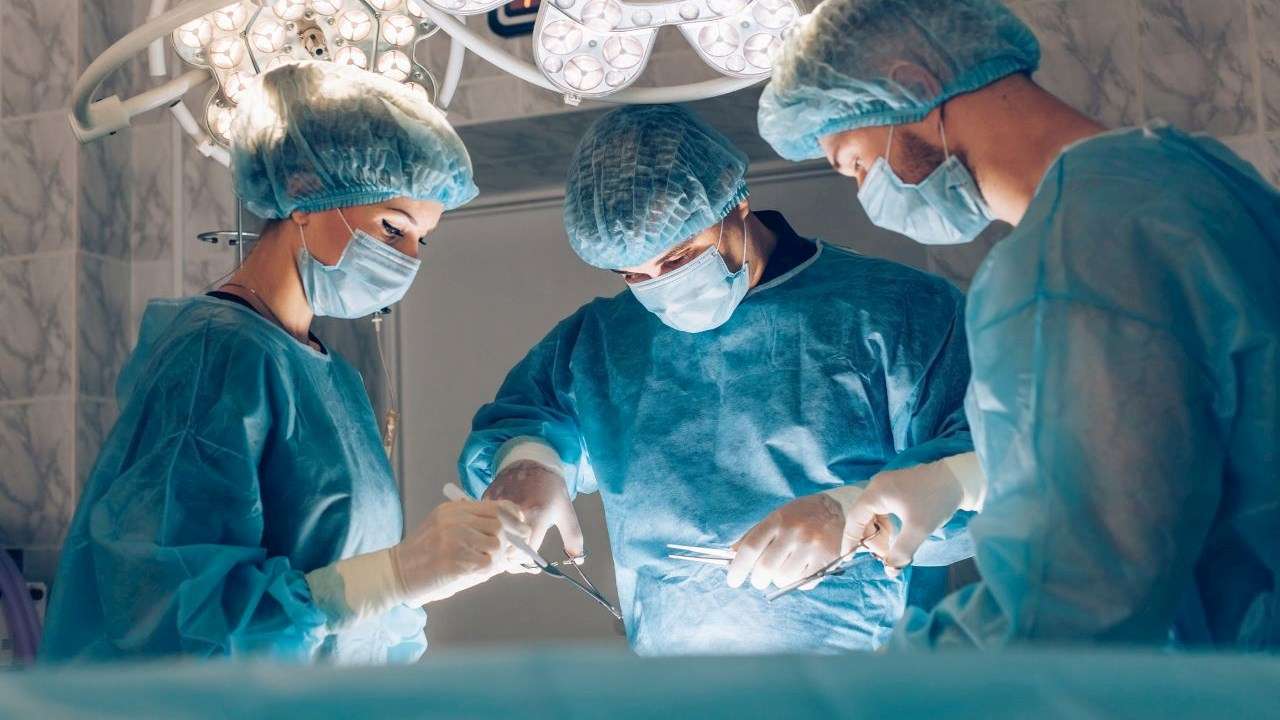
Innovative Technologies Used in Kidney Transplants at UAE Hospitals
19 Jul, 2024
 Healthtrip Team
Healthtrip Team1. Robotic-Assisted Surgery in Kidney Transplants
Robotic-assisted surgery has revolutionized the field of kidney transplants, offering enhanced precision and control that surpass traditional surgical methods. Advanced robotic systems, such as the Da Vinci Surgical System, have significantly improved patient outcomes in kidney transplant procedures.
Most popular procedures in India
A. Enhanced Precision
Robotic-assisted systems bring unparalleled precision to kidney transplants. These systems consist of robotic arms controlled by the surgeon through a console, which translates the surgeon's hand movements into precise, scaled-down actions. The key aspects of enhanced precision include:
a. Reduced Human Error: The robotic arms eliminate the natural tremors of human hands and reduce fatigue, which ensures steady and accurate movements throughout the surgery. This reduction in human error is crucial in delicate procedures like kidney transplants.
b. Complex Maneuvers: Robotic systems enable surgeons to perform intricate procedures with enhanced dexterity. The robotic arms can rotate and manoeuvre in ways that human hands cannot, allowing access to difficult-to-reach areas within the abdominal cavity.
Wellness Treatments
Give yourself the time to relax
Lowest Prices Guaranteed!

Lowest Prices Guaranteed!
c. Consistency: The robotic system provides consistent performance, which is vital for the precise dissection, suturing, and placement of the new kidney. This consistency improves the overall success rate of the transplant procedure.
B. Minimally Invasive Surgery
Robotic-assisted surgery is inherently minimally invasive, which offers significant advantages over traditional open surgery. This approach involves making smaller incisions, leading to multiple benefits:
a. Quicker Recovery Times: The minimally invasive nature of robotic surgery means less trauma to the body. Patients experience faster healing and can often leave the hospital sooner than those who undergo traditional surgery. This rapid recovery is particularly beneficial for kidney transplant recipients, who can resume normal activities more quickly.
b. Reduced Post-Operative Complications: Smaller incisions lead to a lower risk of infection, blood loss, and other complications. Additionally, the precision of robotic-assisted surgery minimizes damage to surrounding tissues, further reducing the likelihood of post-operative issues.
c. Less Pain and Scarring: Patients typically experience less post-operative pain due to the smaller incisions. This reduction in pain contributes to a more comfortable recovery period. Additionally, the smaller incisions result in minimal scarring, improving the cosmetic outcome of the surgery.
C. Improved Visualization
Robotic-assisted surgery significantly enhances visualization through high-definition 3D imaging, which provides surgeons with a detailed view of the surgical site. Improved visualization is critical for the success of kidney transplants for several reasons:
a. Enhanced Detail: The high-definition 3D imaging offers a magnified view of the surgical area, allowing surgeons to see intricate structures and tissues in greater detail. This enhanced detail is essential for precise dissection and suturing during the transplant procedure.
b. Depth Perception: 3D imaging provides depth perception that is not available in traditional 2D laparoscopic surgery. This depth perception aids in the accurate placement of the new kidney and ensures that the connections to blood vessels and the urinary tract are secure and precise.
c. Real-Time Feedback: Surgeons receive real-time feedback from the robotic system, allowing them to make immediate adjustments during the procedure. This real-time feedback is crucial for addressing any unexpected challenges that may arise, ensuring the overall success of the transplant.
Impact on Kidney Transplants
The adoption of robotic-assisted surgery for kidney transplants has a profound impact on both the surgical process and patient outcomes:
a. Higher Success Rates: The precision and control provided by robotic systems increase the likelihood of successful transplants. The improved accuracy in placing the kidney and connecting it to blood vessels and the urinary tract enhances the chances of the transplanted kidney functioning correctly.
b. Shorter Recovery Periods: Patients benefit from quicker recovery times due to the minimally invasive nature of the surgery. They experience less pain, fewer complications, and shorter hospital stays, allowing them to return to their daily activities sooner.
c. Lower Risk of Complications: The enhanced precision and minimally invasive approach reduce the risk of post-operative complications, such as infections and blood loss. This reduction in complications contributes to better long-term outcomes for kidney transplant recipients.
Case Study of Cleveland Clinic
Cleveland Clinic is at the forefront of robotic-assisted kidney transplants, using the Da Vinci Surgical System to perform precise and minimally invasive procedures.
Key Outcomes:
b. Minimally Invasive: Smaller incisions result in quicker recovery times, less post-operative pain, and reduced scarring.
c. Improved Visualization: Advanced 3D imaging provided by the robotic system aids in accurate placement of the kidney, contributing to overall success.
The adoption of robotic-assisted surgery at Cleveland Clinic has led to increased success rates for kidney transplants and shortened recovery periods for patients.
Robotic-assisted surgery for kidney transplants represents a significant advancement in medical technology. The precision, minimally invasive procedures, and enhanced visualization provided by advanced robotic systems elevate the success rates of kidney transplants and significantly enhance the overall patient experience. This innovative approach ensures faster recovery, reduced complications, and improved long-term outcomes, making robotic-assisted surgery a critical component of modern kidney transplant procedures.
'
2. Immunotherapy and Personalized Medicine in Kidney Transplants
Immunotherapy and personalized medicine are transforming kidney transplant procedures, significantly enhancing success rates and patient outcomes. By leveraging targeted therapies, genetic testing, and precision medication, these approaches help reduce rejection risks and optimize post-transplant care.
A. Targeted Therapy
Tailored immunotherapy plays a pivotal role in minimizing the risk of transplant rejection and reducing the dependency on broad-spectrum immunosuppressants:
a. Reduced Rejection Risks: Immunotherapy targets specific components of the immune system that are responsible for attacking the transplanted kidney. By precisely modulating the immune response, tailored therapies help prevent rejection while preserving overall immune function.
b. Minimized Immunosuppressant Dependence: Traditional immunosuppressants can have wide-ranging side effects and require lifelong use. Targeted immunotherapy allows for lower doses of these drugs, reducing their adverse effects and improving the patient’s quality of life. This approach also decreases the risk of infections and other complications associated with long-term immunosuppression.
B. Genetic Testing
Genetic testing before transplantation is critical in identifying the best donor-recipient matches, thus improving graft survival and reducing complications:
a. Pre-Transplant Genetic Screenings: Comprehensive genetic screenings analyze both donor and recipient genetic markers to ensure compatibility. This process helps identify potential mismatches that could lead to rejection, allowing for more informed decision-making when selecting a donor.
b. Enhanced Graft Survival: By matching genetic profiles, the risk of rejection is significantly reduced, leading to better long-term survival of the transplanted kidney. Genetic compatibility also minimizes the need for aggressive immunosuppressive therapy, reducing the risk of associated side effects.
C. Precision Medication
Pharmacogenomics, the study of how genes affect a person’s response to drugs, is instrumental in optimizing drug selection and dosage for kidney transplant recipients:
a. Optimized Drug Selection: By analyzing the genetic profiles of patients, pharmacogenomics allows for the selection of immunosuppressive drugs that are most likely to be effective and least likely to cause adverse reactions. This tailored approach ensures that each patient receives the most appropriate medication based on their genetic makeup.
b. Improved Efficacy and Minimization of Side Effects: Precision medication helps in fine-tuning drug dosages to achieve optimal therapeutic effects while minimizing side effects. This customization leads to better adherence to medication regimens, improved patient outcomes, and a higher quality of life for transplant recipients.
Case Study of Johns Hopkins Hospital
Johns Hopkins Hospital integrates immunotherapy and personalized medicine to enhance kidney transplant outcomes through targeted therapies and genetic testing.
Key Outcomes:
b. Genetic Testing: Detailed genetic screenings ensure optimal donor-recipient compatibility, improving transplant success rates.
c. Precision Medication: Tailored immunosuppressive drug regimens optimize efficacy and reduce side effects.
The use of personalized medicine at Johns Hopkins Hospital has led to better transplant outcomes and improved patient quality of life.
Immunotherapy and personalized medicine are revolutionizing kidney transplant care by offering targeted, genetic-based, and precise treatment strategies. These innovations significantly reduce rejection risks, enhance graft survival, and optimize drug efficacy, ultimately leading to better patient outcomes and improved quality of life for kidney transplant recipients. By integrating these advanced approaches into transplant protocols, the medical community continues to make significant strides in the field of kidney transplantation.
Telemedicine and Remote Monitoring in Post-Transplant Care
Telemedicine and remote monitoring have become indispensable tools in enhancing post-transplant care, providing patients with continuous access to specialists and advanced monitoring technologies. These innovations ensure timely medical interventions, improved medication adherence, and better patient education, significantly improving outcomes for transplant recipients.
A. Remote Consultations
Telemedicine facilitates virtual consultations with healthcare specialists, ensuring patients receive timely care without the need for frequent travel:
b. Timely Care: Remote consultations allow for prompt evaluation and management of post-transplant complications, reducing delays in care. Patients can quickly address concerns and receive necessary medical advice, leading to better health outcomes and reducing the risk of transplant rejection or other complications.
B. Real-Time Monitoring
Wearable devices and remote monitoring tools provide continuous tracking of vital signs and medication adherence, enabling early detection of potential issues:
b. Medication Adherence: Remote monitoring tools can track medication adherence by reminding patients to take their medications and recording when they do. This ensures that patients consistently follow their prescribed immunosuppressive regimens, which is crucial for preventing rejection and maintaining the health of the transplanted organ.
c. Early Intervention: Continuous monitoring enables early detection of complications, such as infections or signs of organ rejection. Healthcare providers can quickly address these issues, potentially preventing more severe health problems and hospitalizations.
C. Patient Education
Telehealth platforms offer a wealth of educational resources and personalized care plans, empowering patients to manage their post-transplant health effectively:
b. Personalized Care Plans: Through telemedicine, healthcare providers can develop and update personalized care plans tailored to each patient's unique needs. These plans can be easily accessed and adjusted based on real-time data from remote monitoring tools, ensuring that patients receive the most relevant and effective care.
c. Empowerment in Self-Management: By providing patients with the knowledge and tools they need, telehealth platforms empower them to take an active role in their health management. This empowerment leads to better adherence to treatment plans, improved health outcomes, and a higher quality of life.
Case Study of Mayo Clinic
Overview: Mayo Clinic utilizes 3D printing technology for pre-operative planning and educational purposes, enhancing surgical precision and training.
Key Outcomes:
b. Educational Tools: Models are used for training medical professionals, improving skills and coordination.
c. Customized Implants: 3D-printed implants are used for complex repairs, ensuring precise fits and reducing surgical times.
Mayo Clinic’s use of 3D printing has led to improved surgical outcomes and more effective training for medical teams.
Telemedicine and remote monitoring represent significant advancements in post-transplant care, offering patients continuous access to specialists, real-time health monitoring, and comprehensive educational resources. These technologies facilitate timely medical interventions, enhance medication adherence, and empower patients to effectively manage their health, leading to improved outcomes and quality of life for transplant recipients. By integrating telemedicine and remote monitoring into post-transplant care protocols, healthcare providers can ensure more efficient, personalized, and proactive patient care.
3. 3D Printing for Surgical Planning and Education
3D printing technology is transforming surgical planning and education by providing precise, patient-specific models and customized tools. These advancements lead to improved procedural accuracy, enhanced training for surgical teams, and better patient outcomes through tailored implants.
A. Patient-Specific Models
3D printing allows for the creation of accurate, patient-specific anatomical models based on CT or MRI scans:
b. Enhanced Surgical Accuracy: By examining these detailed models, surgeons can better understand the spatial relationships and intricacies of the patient's anatomy. This understanding reduces intraoperative surprises and improves the accuracy of the surgical intervention, ultimately leading to better outcomes and reduced operation times.
B. Educational Tools
3D-printed models serve as valuable educational tools for surgical teams, enhancing their skills and improving teamwork:
b. Improved Teamwork: By rehearsing together using 3D models, surgical teams can refine their coordination and communication. This collaborative practice helps in identifying potential challenges and developing strategies to address them, resulting in smoother and more efficient real-life surgeries.
c. Continuing Education: Medical students and residents can greatly benefit from using 3D-printed models as part of their training curriculum. These models provide a tangible, interactive learning experience that complements traditional textbook and lecture-based education, fostering a deeper understanding of complex anatomical structures and surgical techniques.
C. Customized Implants
3D printing enables the creation of customized implants that enhance surgical outcomes by ensuring a better fit and reducing complications:
b. Reduced Surgical Time: The use of custom implants can streamline the surgical process by eliminating the need for intraoperative adjustments. This efficiency reduces the duration of the surgery, minimizing the risk of infection and other complications associated with longer operative times.
c. Enhanced Recovery: Patients with customized implants often experience quicker and more comfortable recoveries. The tailored fit of these implants leads to improved functionality and a more natural feel, promoting better integration with the patient’s body and faster rehabilitation.
Case Study of Mayo Clinic
Mayo Clinic utilizes 3D printing technology for pre-operative planning and educational purposes, enhancing surgical precision and training.
Key Outcomes:
b. Educational Tools: Models are used for training medical professionals, improving skills and coordination.
c. Customized Implants: 3D-printed implants are used for complex repairs, ensuring precise fits and reducing surgical times.
Mayo Clinic’s use of 3D printing has led to improved surgical outcomes and more effective training for medical teams.
3D printing technology is revolutionizing surgical planning and education by providing precise, patient-specific models, enhancing training for surgical teams, and enabling the creation of customized implants. These innovations lead to improved procedural accuracy, better teamwork, and superior patient outcomes. By integrating 3D printing into surgical protocols, healthcare providers can achieve more precise, efficient, and effective surgeries, ultimately enhancing the overall quality of patient care.
4. Artificial Intelligence (AI) in Transplant Management
Artificial Intelligence (AI) technologies are transforming transplant management by enhancing predictive analytics, optimizing operational efficiency, and supporting clinical decision-making. These advancements lead to improved patient outcomes, more efficient transplant programs, and better real-time decisions in complex cases.
A. Predictive Analytics
AI algorithms play a crucial role in analyzing patient data to predict transplant outcomes and personalize treatment plans:
b. Personalized Treatment Plans: Using predictive analytics, AI can help tailor treatment plans to individual patients. By considering factors such as genetic information, medical history, and current health status, AI creates personalized plans that optimize immunosuppressive therapy, post-operative care, and follow-up schedules, enhancing the overall success of the transplant.
B. Operational Efficiency
AI enhances the efficiency of transplant programs by optimizing organ allocation and resource management:
b. Resource Management: AI helps in managing the logistical aspects of transplant programs, such as scheduling surgeries, coordinating between multiple teams, and ensuring the availability of necessary medical resources. By optimizing these processes, AI reduces delays, minimizes wastage, and improves overall program efficiency.
c. Predictive Maintenance of Equipment: AI can also predict when medical equipment and facilities need maintenance or replacement, ensuring that everything is in optimal working condition for transplant procedures. This proactive approach minimizes downtime and enhances the reliability of transplant services.
C. Clinical Decision Support
AI tools assist clinicians in real-time decision-making during complex transplant cases, providing valuable insights and recommendations:
b. Risk Assessment: AI can assess the risk factors associated with each transplant case by integrating patient data and predictive models. This risk assessment aids clinicians in identifying potential complications early and adjusting their strategies accordingly to mitigate risks.
c. Post-Operative Monitoring: After the transplant, AI-driven tools can continuously monitor patient data, such as vital signs and lab results, to detect any signs of rejection or other complications early. This continuous monitoring allows for timely interventions, improving patient prognosis and reducing the likelihood of adverse outcomes.
Case Study of Stanford Health Care
Stanford Health Care employs AI to enhance transplant management through predictive analytics and decision support.
Key Outcomes:
b. Operational Efficiency: AI improves organ allocation efficiency, increasing the likelihood of successful transplants by minimizing the time organs spend outside the body.
c. Clinical Decision Support: Real-time AI tools assist in decision-making during surgeries, helping teams respond promptly to issues.
The integration of AI at Stanford Health Care has led to better patient outcomes, more efficient organ management, and improved decision-making processes.
AI technologies are revolutionizing transplant management by enhancing predictive analytics, optimizing operational efficiency, and supporting clinical decision-making. These innovations lead to more personalized treatment plans, efficient organ allocation, and better real-time decision-making during complex transplant procedures. By integrating AI into transplant management, healthcare providers can achieve improved patient outcomes, increased efficiency, and a higher overall quality of care.
How can HealthTrip assist with your treatment?
If you're seeking Treatment in UAE, let HealthTrip be your compass. We support you throughout your medical journey with the following:
- Access to top doctors in 38+ countries and the largest health travel platform.
- Partnerships with 1500+ hospitals, including Fortis, Medanta, and more.
- Treatments in neuro, cardiac care, transplants, aesthetics, and wellness.
- Post-treatment care and assistance.
- Teleconsultations with leading doctors at $1/minute.
- Over 61K patients served.
- Access Top treatments and packages, such as Angiograms and many more.
- Gain insights from genuine patient experiences and testimonials.
- Stay updated with our medical blog.
- 24/7 unwavering support, from hospital formalities to travel arrangements or emergencies.
Hear from our satisfied patients
The integration of these advanced technologies underscores UAE hospitals' commitment to enhancing kidney transplant care. By leveraging robotic surgery, personalized medicine, telemedicine, 3D printing, and AI, these hospitals ensure that patients receive world-class treatment, leading to improved outcomes and quality of life post-transplant. As technology continues to evolve, these innovations promise further advancements in organ transplantation, offering hope to patients and their families across the UAE and beyond.
Related Blogs

Long-Term Follow-Up After Eye Surgery
Detailed insights into eye surgery – doctors, hospitals, technology, recovery,

Healthtrip’s Transparency in Eye Surgery Pricing and Packages
Detailed insights into eye surgery – doctors, hospitals, technology, recovery,

Frequently Asked Questions About Eye Surgery
Detailed insights into eye surgery – doctors, hospitals, technology, recovery,

Advanced Robotic Technology Used in Eye Surgery
Detailed insights into eye surgery – doctors, hospitals, technology, recovery,

How Healthtrip Supports Foreign Patients for Eye Surgery in India
Detailed insights into eye surgery – doctors, hospitals, technology, recovery,

Top Medical Packages for Eye Surgery Offered by Healthtrip
Detailed insights into eye surgery – doctors, hospitals, technology, recovery,











